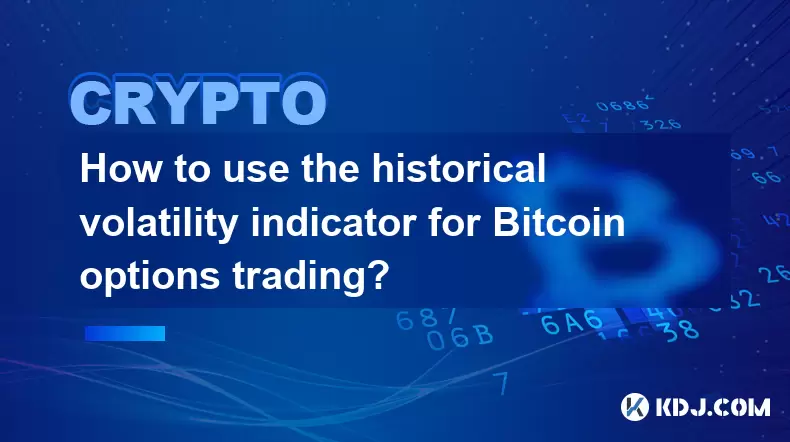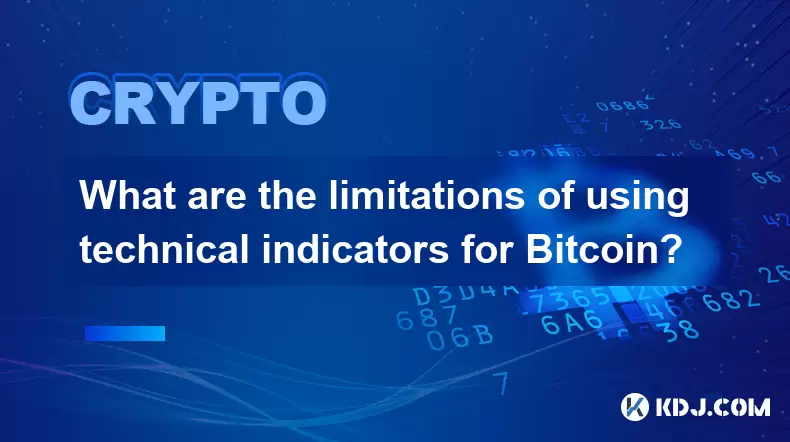-
 Bitcoin
Bitcoin $108,250.0992
0.11% -
 Ethereum
Ethereum $2,515.9404
0.03% -
 Tether USDt
Tether USDt $1.0003
0.00% -
 XRP
XRP $2.2166
-0.19% -
 BNB
BNB $656.5904
0.29% -
 Solana
Solana $147.4122
-0.58% -
 USDC
USDC $1.0000
-0.01% -
 TRON
TRON $0.2830
0.06% -
 Dogecoin
Dogecoin $0.1641
0.27% -
 Cardano
Cardano $0.5739
-0.19% -
 Hyperliquid
Hyperliquid $39.1463
-0.11% -
 Sui
Sui $2.8882
-0.02% -
 Bitcoin Cash
Bitcoin Cash $487.6428
0.31% -
 Chainlink
Chainlink $13.2097
0.07% -
 UNUS SED LEO
UNUS SED LEO $9.0308
0.10% -
 Avalanche
Avalanche $17.8608
0.13% -
 Stellar
Stellar $0.2379
-0.06% -
 Toncoin
Toncoin $2.7400
-0.39% -
 Shiba Inu
Shiba Inu $0.0...01144
-0.36% -
 Litecoin
Litecoin $87.5467
0.66% -
 Hedera
Hedera $0.1538
0.22% -
 Monero
Monero $315.5479
0.36% -
 Dai
Dai $1.0000
0.00% -
 Polkadot
Polkadot $3.3523
-0.71% -
 Ethena USDe
Ethena USDe $1.0003
0.01% -
 Bitget Token
Bitget Token $4.3960
-1.03% -
 Uniswap
Uniswap $7.2663
4.19% -
 Aave
Aave $272.8619
2.04% -
 Pepe
Pepe $0.0...09676
-0.18% -
 Pi
Pi $0.4586
-2.87%
How to use the historical volatility indicator for Bitcoin options trading?
Bitcoin options traders use historical volatility to gauge past price swings and compare them with implied volatility, helping identify overvalued or undervalued premiums for strategic trade setups.
Jul 06, 2025 at 04:14 am

Understanding the Historical Volatility Indicator
The historical volatility indicator (HV) is a statistical measure used to assess the price fluctuations of an asset over a specific time period. In the context of Bitcoin options trading, this metric helps traders evaluate past price movements to anticipate potential future swings. Unlike implied volatility, which reflects market expectations derived from option prices, historical volatility is purely backward-looking and calculated using standard deviation formulas.
To apply this effectively, traders must first understand how to calculate HV. The standard method involves taking the natural logarithm of each consecutive price ratio, calculating the mean of these values, then determining their variance and standard deviation. This final figure is annualized by multiplying it with the square root of the number of periods in a year—typically 365 for daily data.
Selecting the Right Time Frame for Bitcoin Analysis
When applying the historical volatility indicator to Bitcoin options, choosing the appropriate time frame is crucial. Traders often use 20-day, 30-day, or 90-day HV measures depending on the expiration date of the options they are considering. Short-dated options may benefit from shorter-term volatility readings, while longer-term options strategies might require broader historical data.
For example, if you're trading a weekly Bitcoin option, a 10- to 20-day historical volatility window could provide more relevant insights. On the other hand, for monthly or quarterly options, analyzing 60- to 90-day HV offers a better understanding of underlying volatility trends.
It's also important to note that Bitcoin’s volatility can change rapidly due to macroeconomic events, regulatory news, or market sentiment shifts. Therefore, selecting a dynamic and adaptable time frame allows for more accurate assessments when entering or exiting trades.
Comparing Historical Volatility with Implied Volatility
One of the most effective ways to utilize the historical volatility indicator in Bitcoin options trading is by comparing it with implied volatility (IV). When IV exceeds HV, it suggests that the market expects increased volatility in the future, potentially leading to overvalued options premiums. Conversely, if IV is lower than HV, it could indicate that the current pricing of options doesn’t fully reflect recent price swings, possibly signaling an opportunity to buy undervalued options.
This comparison is commonly visualized through volatility cones or IV vs. HV charts, which allow traders to see where current IV stands relative to historical levels. These tools help identify whether options are priced above or below normal volatility ranges, guiding decisions on straddle setups, volatility arbitrage, or directional trades.
Incorporating HV into Option Pricing Models
Traders who use models like Black-Scholes or Binomial Trees for pricing Bitcoin options need to input volatility as one of the key parameters. While implied volatility is typically used in such models, incorporating historical volatility can serve as a sanity check or alternative scenario analysis.
In practice, some traders substitute HV for IV in pricing models to determine what the fair value of an option should be based on past realized volatility. If the actual market price of the option deviates significantly from this calculated value, it may present a trading opportunity.
For instance, if the Black-Scholes model using HV yields an option price of $200, but the market price is $250, the option could be overpriced, suggesting a short premium strategy. Alternatively, if the market price is below the model output, it might signal a long volatility position.
Using HV to Structure Volatility-Based Trading Strategies
Historical volatility plays a central role in structuring various options strategies, especially those centered around volatility expansion or contraction. Strategies such as straddles, strangles, iron condors, and risk reversals can be fine-tuned using HV metrics.
For example, during periods of low historical volatility, traders may consider buying straddles or strangles in anticipation of a breakout. Conversely, when HV spikes and appears overstretched, selling premium through credit spreads or covered calls becomes more attractive.
Additionally, traders can monitor HV trends across multiple time frames to detect divergences or confirmations. A rising 20-day HV alongside a flattening 90-day HV may suggest a short-term volatility spike, which could influence the choice between near-term vs. long-dated options.
Common Pitfalls and Best Practices in Using HV
While the historical volatility indicator is a powerful tool, there are several pitfalls that Bitcoin options traders should avoid. One common mistake is relying solely on HV without considering market context. Bitcoin has shown structural changes in its volatility regime over time, particularly as institutional adoption increases and markets mature.
Another pitfall is failing to normalize HV values across different assets or time frames. Since Bitcoin tends to be more volatile than traditional assets, comparisons should be made within the same asset class or against its own historical averages.
Best practices include:
- Regularly updating HV calculations with the latest price data
- Combining HV with volume and open interest metrics for confirmation
- Monitoring macro-level volatility indicators such as VIX or BTC volatility indices (BVOL)
- Using rolling HV windows to spot trend changes rather than isolated spikes
By integrating these practices, traders can enhance their decision-making process and improve the accuracy of their Bitcoin options trading strategies.
Frequently Asked Questions (FAQs)
Q: Can historical volatility predict future Bitcoin price movements?
A: No, historical volatility does not predict future price direction. It only quantifies the magnitude of past price fluctuations and serves as a reference for expected volatility levels.
Q: Is historical volatility the same across all exchanges for Bitcoin options?
A: While the core calculation remains consistent, differences in price feeds, exchange-specific volatility, and liquidity can lead to variations in HV readings across platforms.
Q: How often should I update my historical volatility calculations for Bitcoin options?
A: Ideally, daily updates are recommended, especially for short-dated options. For longer-dated contracts, weekly recalculations may suffice unless major market-moving events occur.
Q: Should I use historical volatility for both call and put options in Bitcoin trading?
A: Yes, HV applies equally to both call and put options, as it measures overall price variability regardless of direction. Both types of options are affected by the underlying asset’s volatility.
Disclaimer:info@kdj.com
The information provided is not trading advice. kdj.com does not assume any responsibility for any investments made based on the information provided in this article. Cryptocurrencies are highly volatile and it is highly recommended that you invest with caution after thorough research!
If you believe that the content used on this website infringes your copyright, please contact us immediately (info@kdj.com) and we will delete it promptly.
- XRP's Upside Potential: Analysts Bullish Despite Accessibility Concerns
- 2025-07-06 10:30:13
- Dubai Hotelier, Crypto Scam, and an Arrest in India: A Tangled Web
- 2025-07-06 10:30:13
- Bitcoin's Calm Before the Storm: ETF Inflows Surge Amidst Low Volatility
- 2025-07-06 10:50:13
- Crypto Capital Inflows: Why Qubetics, Ethereum, and SUI are Investment Coins to Watch
- 2025-07-06 10:50:13
- Bitcoin, Crypto, and Polymarket: Decoding the Crystal Ball
- 2025-07-06 11:15:22
- XRP Price Prediction: Can XRP Break the Weekly Downtrend?
- 2025-07-06 11:00:13
Related knowledge

What is the Woodies CCI indicator and can it be used for Bitcoin?
Jul 04,2025 at 05:14pm
Understanding the Woodies CCI IndicatorThe Woodies CCI indicator is a variation of the traditional Commodity Channel Index (CCI), which was originally developed by Donald Lambert. The standard CCI measures the current price level relative to an average price over a given period, typically 14. However, the Woodies version modifies this calculation to mak...

How to use indicators to trade the opening range breakout for Bitcoin CME futures?
Jul 05,2025 at 07:35pm
What Is the Opening Range Breakout Strategy?The opening range breakout (ORB) strategy is a popular trading technique used in both traditional markets and cryptocurrency futures, particularly for Bitcoin on the CME. This method involves identifying a specific price range formed during the early phase of a trading session and then taking positions when th...

What does a bearish cross on the Stochastic RSI mean for Bitcoin?
Jul 05,2025 at 07:18pm
Understanding the Stochastic RSI IndicatorThe Stochastic RSI (Relative Strength Index) is a momentum oscillator used in technical analysis to identify overbought or oversold conditions in an asset's price. It combines two well-known indicators — the RSI and the Stochastic Oscillator — to provide more nuanced signals than either could alone. The Stochast...

What are the limitations of using technical indicators for Bitcoin?
Jul 06,2025 at 03:35am
Understanding the Role of Technical Indicators in Cryptocurrency TradingIn the realm of Bitcoin trading, technical indicators are tools used by traders to analyze historical price data and volume to predict future price movements. These indicators—such as Moving Averages, Relative Strength Index (RSI), and MACD—are widely adopted across traditional fina...

How to use the historical volatility indicator for Bitcoin options trading?
Jul 06,2025 at 04:14am
Understanding the Historical Volatility IndicatorThe historical volatility indicator (HV) is a statistical measure used to assess the price fluctuations of an asset over a specific time period. In the context of Bitcoin options trading, this metric helps traders evaluate past price movements to anticipate potential future swings. Unlike implied volatili...

Best indicator for confirming chart patterns like head and shoulders on Bitcoin
Jul 06,2025 at 01:07pm
Understanding Chart Patterns in Cryptocurrency TradingIn the volatile world of Bitcoin trading, chart patterns serve as critical tools for identifying potential price movements. Among these, the head and shoulders pattern is one of the most reliable reversal indicators. Recognizing this formation requires not only visual identification but also confirma...

What is the Woodies CCI indicator and can it be used for Bitcoin?
Jul 04,2025 at 05:14pm
Understanding the Woodies CCI IndicatorThe Woodies CCI indicator is a variation of the traditional Commodity Channel Index (CCI), which was originally developed by Donald Lambert. The standard CCI measures the current price level relative to an average price over a given period, typically 14. However, the Woodies version modifies this calculation to mak...

How to use indicators to trade the opening range breakout for Bitcoin CME futures?
Jul 05,2025 at 07:35pm
What Is the Opening Range Breakout Strategy?The opening range breakout (ORB) strategy is a popular trading technique used in both traditional markets and cryptocurrency futures, particularly for Bitcoin on the CME. This method involves identifying a specific price range formed during the early phase of a trading session and then taking positions when th...

What does a bearish cross on the Stochastic RSI mean for Bitcoin?
Jul 05,2025 at 07:18pm
Understanding the Stochastic RSI IndicatorThe Stochastic RSI (Relative Strength Index) is a momentum oscillator used in technical analysis to identify overbought or oversold conditions in an asset's price. It combines two well-known indicators — the RSI and the Stochastic Oscillator — to provide more nuanced signals than either could alone. The Stochast...

What are the limitations of using technical indicators for Bitcoin?
Jul 06,2025 at 03:35am
Understanding the Role of Technical Indicators in Cryptocurrency TradingIn the realm of Bitcoin trading, technical indicators are tools used by traders to analyze historical price data and volume to predict future price movements. These indicators—such as Moving Averages, Relative Strength Index (RSI), and MACD—are widely adopted across traditional fina...

How to use the historical volatility indicator for Bitcoin options trading?
Jul 06,2025 at 04:14am
Understanding the Historical Volatility IndicatorThe historical volatility indicator (HV) is a statistical measure used to assess the price fluctuations of an asset over a specific time period. In the context of Bitcoin options trading, this metric helps traders evaluate past price movements to anticipate potential future swings. Unlike implied volatili...

Best indicator for confirming chart patterns like head and shoulders on Bitcoin
Jul 06,2025 at 01:07pm
Understanding Chart Patterns in Cryptocurrency TradingIn the volatile world of Bitcoin trading, chart patterns serve as critical tools for identifying potential price movements. Among these, the head and shoulders pattern is one of the most reliable reversal indicators. Recognizing this formation requires not only visual identification but also confirma...
See all articles

























































































